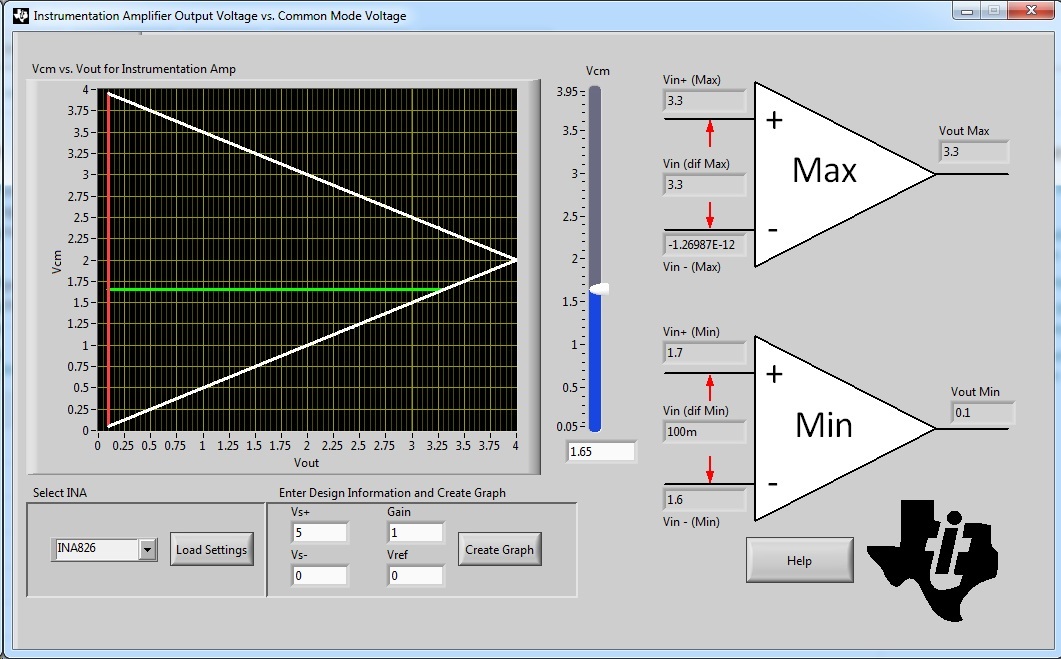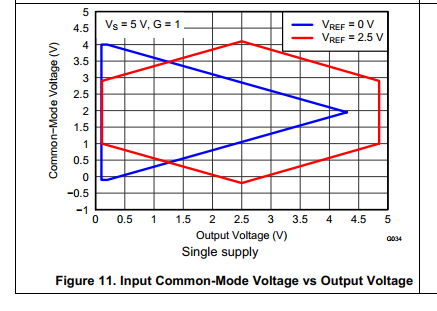Other Parts Discussed in Thread: LM7705,
I have this plot for my target application:
I want a dynamic range as close to 0-3.3V as I can get so I'm looking at biasing this part at a higher voltage. The Vcm will usually be 1.65V. The Vref can change since it is user settable. I noticed that if the Vref is set to 0V the "Vin (dif Min)" value is 100m. I assume this is 100mV. My question is, what exactly does this mean? What happens if my Vin differential voltage in this configuration is lower than 100mV? Say I set this up and put a 10mV or 1mV differential signal on the input? What happens? I thought these devices were designed to receive very small voltages.
The output max and min means the output won't exceed those values, but the input can theoretically be driven with anything so what exactly does that mean? What happens if I violate it?
What do you do if you want to sense a smaller differential voltage?



